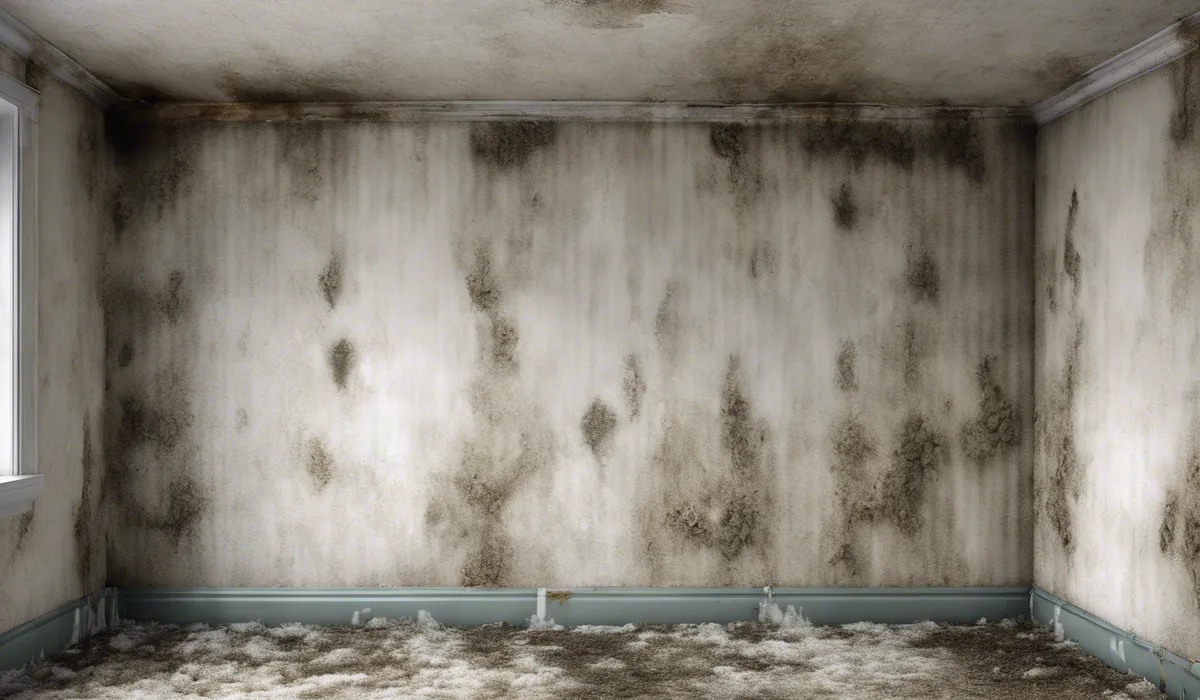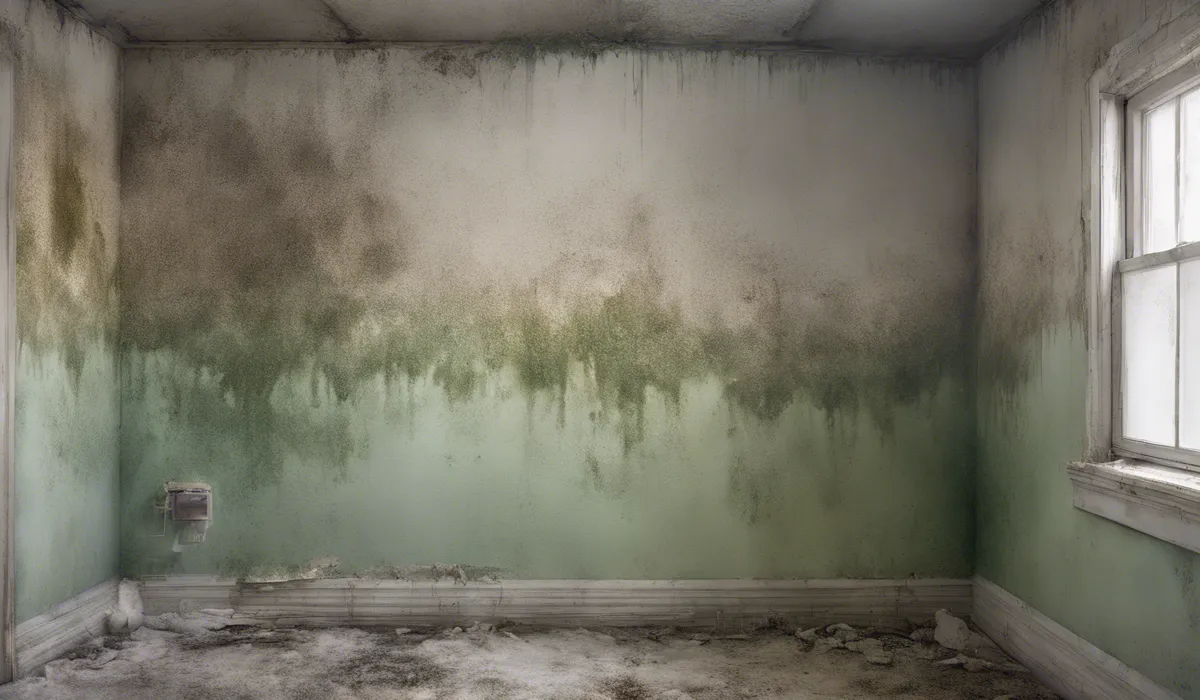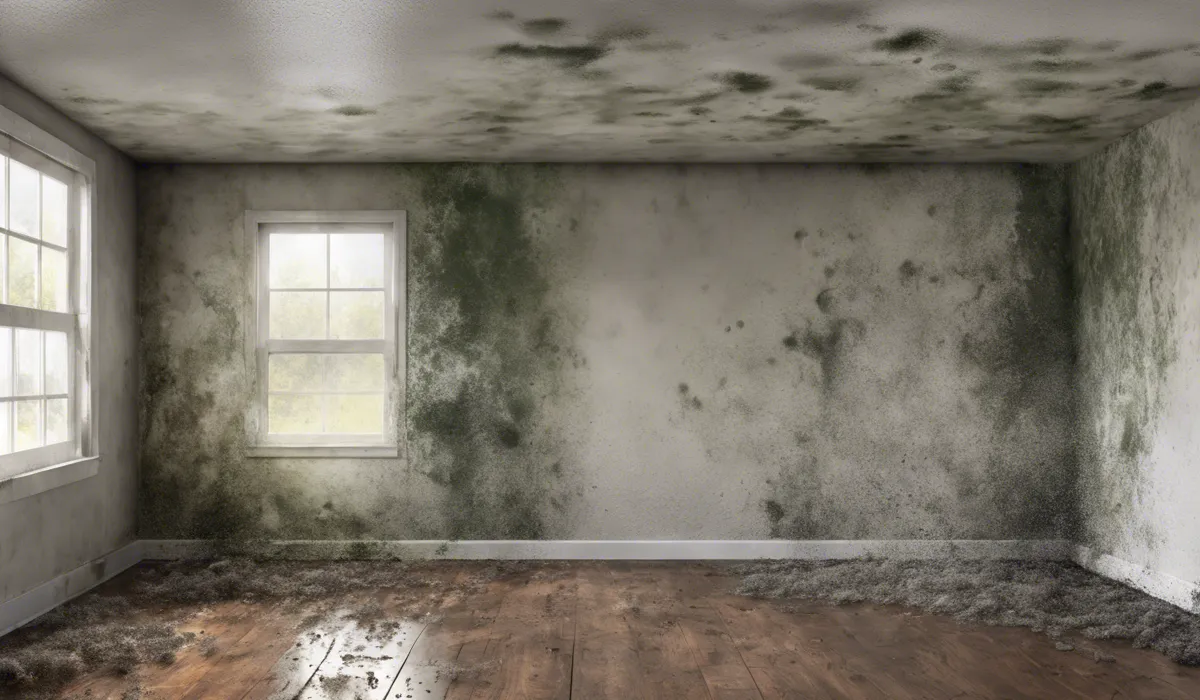To check for mold in walls, inspect for discoloration, peeling paint, or a musty odor. Use a flashlight to examine corners and hidden areas. If suspicious, probe gently with a screwdriver for softened wood, a sign of decay. For a thorough assessment, consider hiring a professional mold inspector.
Signs of Mold in Walls

Discoloration and Stains
One of the most obvious indicators of potential mold growth is the presence of discoloration and stains on your walls.
These can vary in color, often appearing as green, black, or brown patches. They may seem to be just surface-level issues, but they can signify deeper problems.
Look for irregular patterns and clusters, typically in areas where moisture accumulates.
Stains that do not clean off easily or return after cleaning are particularly suspect and warrant further investigation.
Musty Odors
Mold has a distinctive smell. If you notice a persistent musty odor in your home, it could be emanating from hidden mold within your walls.
This smell is often compared to wet cardboard or damp socks and is a strong indicator of mold growth, especially if it’s more pronounced in certain areas or rooms.
Trust your nose; if something smells off, it’s worth checking out.
Visible Growth and Spots
At times, mold on walls manifests as visible growth or spots. These might look like speckles or large patches, depending on the extent of the growth.
Visible mold should be taken seriously because what you can see is often just the tip of the iceberg. There’s likely more growing beneath the surface or behind the wall.
Peeling, Warping, or Bulging of the Wall
Mold growth can affect the structural integrity of your walls. If you notice the paint peeling, wallpaper coming loose, or the wallboard warping or bulging, it could be due to the moisture that mold thrives on.
Should you find these physical changes, it’s crucial to assess the area for mold and address the underlying moisture problem.
Recent Water Damage or Moisture Issues
If your home has recently suffered from water damage or persistent moisture issues, the risk of mold growth is heightened.
Be vigilant in such cases and inspect your walls for any of the aforementioned signs. Areas with ongoing dampness are breeding grounds for mold spores.
Allergic Reactions or Health Symptoms in Occupants
Finally, pay attention to the health of people in your home. If occupants are experiencing allergic reactions like sneezing, coughing, or itchy eyes, especially when in certain rooms, this could point to mold exposure.
Mold can be particularly harmful to those with respiratory issues or compromised immune systems.
Tools and Techniques for Mold Detection

Moisture Meters to Detect Dampness
A moisture meter is an invaluable tool for detecting dampness within walls, a precursor to mold growth.
By measuring the moisture content, you can identify at-risk areas that may not be visible to the naked eye.
These devices come in various forms, including pin-type meters that penetrate the surface and non-destructive meters that use radio waves to measure moisture levels.
Infrared Cameras for Hidden Moisture
Infrared cameras, or thermal imaging, provide a visual representation of temperature differences in walls, which can indicate moisture presence.
While not a direct mold detection tool, thermal imaging can help you locate potential problem areas where mold may be growing unseen.
Borescopes for Inspection Inside Walls
Borescopes are small cameras on flexible cables that can be inserted into walls through tiny holes.
They allow a visual inspection of the interior of a wall without the need for large, invasive cuts. This can be a great way to confirm the presence of mold in suspected areas with minimal damage.
DIY Mold Test Kits
For those who wish to take initial steps themselves, DIY mold test kits are available. These kits typically involve taking samples of the air or surfaces in your home and sending them to a lab for analysis.
While helpful, they should not replace professional assessment, particularly if the presence of mold is likely.
Professional Mold Inspection Services
A professional mold inspection is the most reliable way to detect mold in your walls. Certified inspectors have the training, experience, and equipment to perform comprehensive assessments.
They can identify mold types, the extent of the infestation, and the necessary remediation steps.
Steps to Take if Mold is Found

Safety Precautions Before Mold Removal
Before attempting mold removal, it is essential to take the appropriate safety precautions.
Wear protective gear such as gloves, masks, and goggles to prevent inhaling spores or coming into contact with mold. Ensure the area is well-ventilated to disperse any airborne spores released during the cleaning process.
Cleaning Small Areas of Mold
If the area of mold is small (less than 10 square feet), you may be able to clean it yourself using a mixture of water and detergent.
Avoid using bleach, as it can cause harmful fumes and may not penetrate surfaces to kill mold at the root. After cleaning, dry the area thoroughly to prevent the mold from returning.
When to Call a Professional for Mold Remediation?
Larger mold infestations or those caused by sewage or contaminated water require professional remediation.
Professionals have the tools and techniques to safely and effectively remove mold, repair damage, and prevent future growth. If you have any health concerns or the mold covers a large area, do not hesitate to call a professional.
Preventing Future Mold Growth
Prevention is key to ensuring that mold does not become a recurring problem in your home.
Keep humidity levels low, fix leaks promptly, and ensure proper ventilation, especially in areas like kitchens and bathrooms. Use mold-resistant paint and building materials during repairs or renovations.
Monitoring Humidity and Ventilation in the Home
Regularly monitor the humidity in your home with a hygrometer to ensure levels stay below 60%. Maintain good ventilation by using exhaust fans and opening windows when cooking or showering.
This reduces moisture accumulation, which is a main contributing factor for mold growth. By staying vigilant and proactive, you can keep your home healthy and mold-free.
FAQs About Checking for Mold in Walls
What are the initial signs of mold in walls?
Initial signs of mold in walls include discoloration, peeling paint, or a musty odor.
How can I inspect hidden areas for mold?
Use a flashlight to carefully examine corners and hidden areas for any signs of mold.
What should I do if I find a suspicious spot on my wall?
If you find a suspicious spot, probe gently with a screwdriver to check for softened wood, which is a sign of decay and potential mold presence.
Can I check for mold in walls myself?
Yes, you can perform an initial check yourself by looking for visual signs and odors, but for a thorough assessment, consider hiring a professional mold inspector.
Why should I consider hiring a professional mold inspector?
Hiring a professional mold inspector is advised for a comprehensive assessment, as they have the expertise and equipment to detect mold not visible to the naked eye.
Final Thoughts
When inspecting walls for mold, look for discoloration, paint issues, and musty smells. Use a flashlight for better visibility in hidden spots.
Softened wood detected with a screwdriver can indicate decay. For comprehensive evaluation, consider enlisting a professional mold inspector’s expertise.
